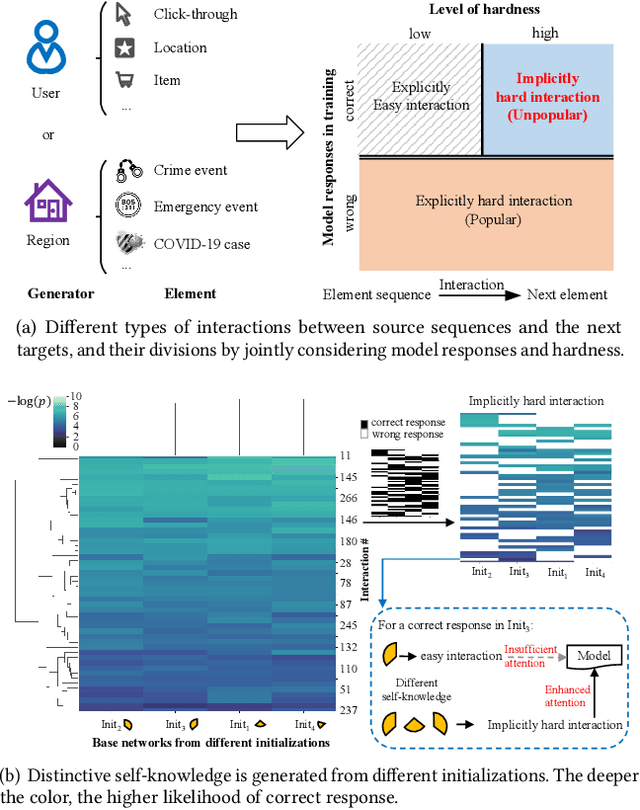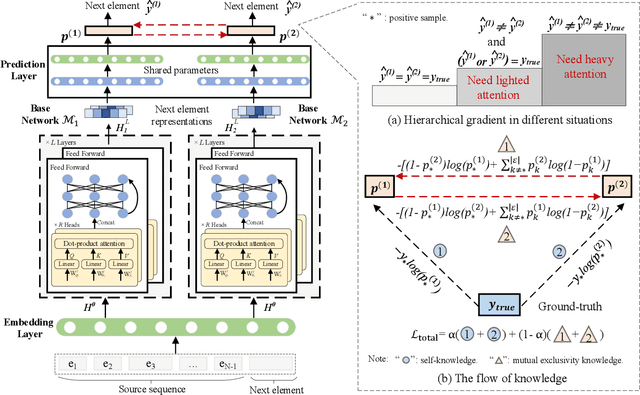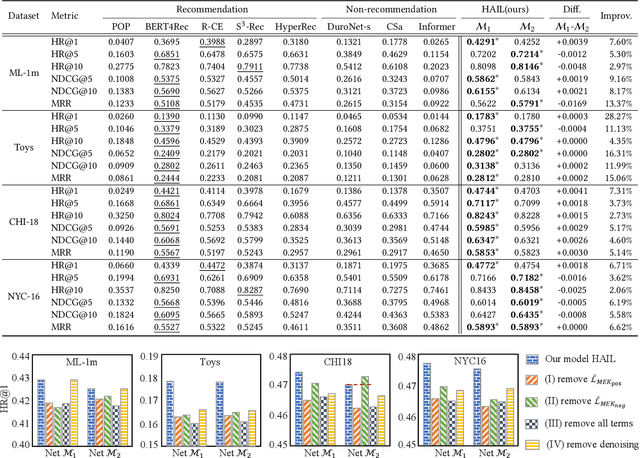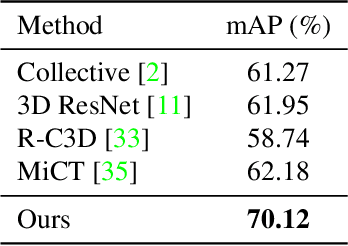Jianquan Liu
What is Next when Sequential Prediction Meets Implicitly Hard Interaction?
Feb 14, 2022



Abstract:Hard interaction learning between source sequences and their next targets is challenging, which exists in a myriad of sequential prediction tasks. During the training process, most existing methods focus on explicitly hard interactions caused by wrong responses. However, a model might conduct correct responses by capturing a subset of learnable patterns, which results in implicitly hard interactions with some unlearned patterns. As such, its generalization performance is weakened. The problem gets more serious in sequential prediction due to the interference of substantial similar candidate targets. To this end, we propose a Hardness Aware Interaction Learning framework (HAIL) that mainly consists of two base sequential learning networks and mutual exclusivity distillation (MED). The base networks are initialized differently to learn distinctive view patterns, thus gaining different training experiences. The experiences in the form of the unlikelihood of correct responses are drawn from each other by MED, which provides mutual exclusivity knowledge to figure out implicitly hard interactions. Moreover, we deduce that the unlikelihood essentially introduces additional gradients to push the pattern learning of correct responses. Our framework can be easily extended to more peer base networks. Evaluation is conducted on four datasets covering cyber and physical spaces. The experimental results demonstrate that our framework outperforms several state-of-the-art methods in terms of top-k based metrics.
Weakly-Supervised Multi-Person Action Recognition in 360$^{\circ}$ Videos
Feb 09, 2020



Abstract:The recent development of commodity 360$^{\circ}$ cameras have enabled a single video to capture an entire scene, which endows promising potentials in surveillance scenarios. However, research in omnidirectional video analysis has lagged behind the hardware advances. In this work, we address the important problem of action recognition in top-view 360$^{\circ}$ videos. Due to the wide filed-of-view, 360$^{\circ}$ videos usually capture multiple people performing actions at the same time. Furthermore, the appearance of people are deformed. The proposed framework first transforms omnidirectional videos into panoramic videos, then it extracts spatial-temporal features using region-based 3D CNNs for action recognition. We propose a weakly-supervised method based on multi-instance multi-label learning, which trains the model to recognize and localize multiple actions in a video using only video-level action labels as supervision. We perform experiments to quantitatively validate the efficacy of the proposed method and qualitatively demonstrate action localization results. To enable research in this direction, we introduce 360Action, the first omnidirectional video dataset for multi-person action recognition.
 Add to Chrome
Add to Chrome Add to Firefox
Add to Firefox Add to Edge
Add to Edge